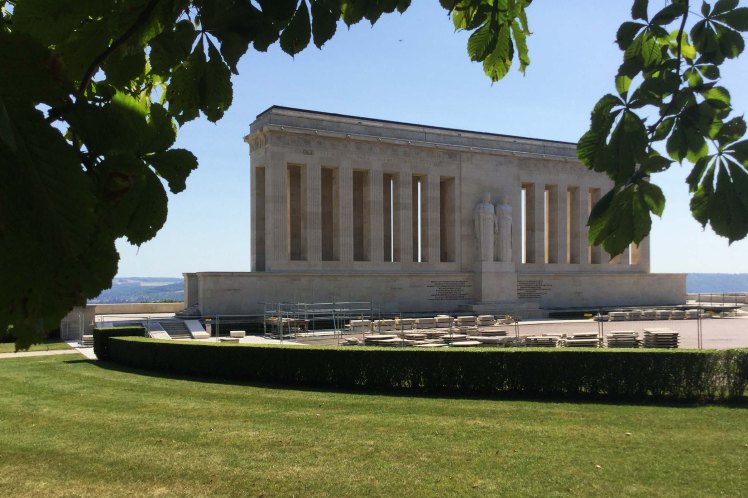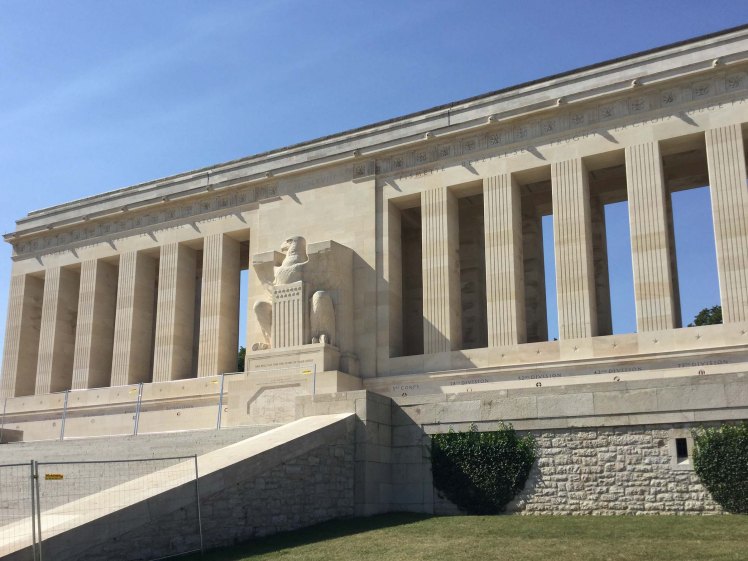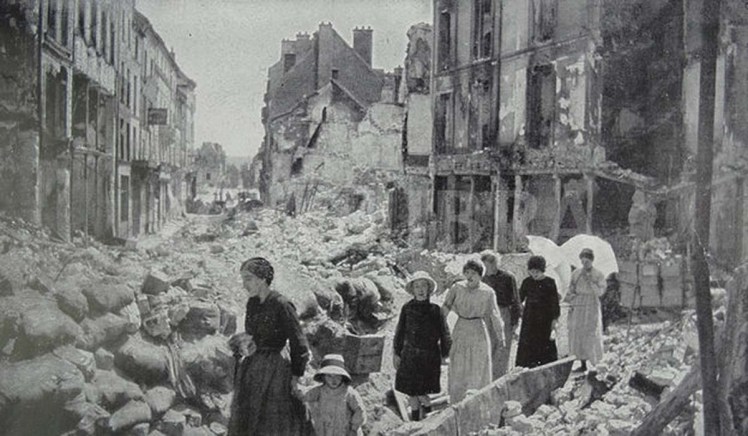[Draft]

History becomes the great eraser.
What is past is past, and often lost to human memory when those who participated in the events are gone.
Americans in France
My grandfather, James Madison Pearson, arrived in France late in November of 1917 along with other soldiers of the American Expeditionary Force under the command of General Black Jack Pershing. He was initially with the 2nd Infantry Division. His unit was bivouacked near the French village of Graffigny-Chemin in the French province of Lorraine, in the region of the Vosges Mountains near the contested fortress of Verdun. Reorganization of the American units followed, and my grandfather became attached to the 3rd Infantry Division, an officer of a machine gun brigade
Meuse-Argonne
The final battle of the war was the Meuse-Argonne Offensive in which my grandfather and his cousin, Varlourd Pearson participated, although with different units. Sergeant Varlourd Pearson serving with the 147th Infantry Regiment, organized in Kansas, and made up of soldiers from the Kansas Reserves, drawn principally from Manhattan, Kansas, where many of the soldiers, like Varlourd had been attending school at Kansas State University. Tragically, Sergeant Pearson would die in action on the third day of battle.
He is buried in France.

Chateau-Thierry
I get ahead of myself. It is the earlier Battle of Chateau-Thierry of which I wish to speak.
A Silver Star, a campaign ribbon, a mention of Chateau-Thierry, a wounding, a family story of our grandfather nursed back to health by a French girl, Marguerite Chevallier Meine, who would later become his wife. These are the disconnected memories of a past that is now lost.
Battles are, for the most part, brief. Bombardment and infantry charges cost lives and material. Too soon, the units that advanced lose the coverage of artillery and become vulnerable to enemy artillery and coordinated counter-attacks. This problem is experience by both sides in war.
The Germans had taken advantage of the Russian exit from the war to send units from the Eastern Front to France, where they hoped an attack in advance of American participation in the war might be successful. General Ludendorf, who ordered the German offensive along the Marne toward Paris was partially correct. The new German units advanced 40 miles, reaching the Marne and taking Chateau-Thierry. But the Germans exceeded their artillery support and supply of ammunition. French resistance stiffened and untested American units were quickly thrown into action.
Machine gun units of the 3rd Division occupied the bridges along the Marne River that led in Chateau Thierry. Nevertheless, on June 1, the Germans advanced into Chateau-Thierry forcing a French and American retreat across the Marne.
This was to be the extent of the German advance.

On July 18th, 1918, combined French and American units counter-attacked. Their offensive was directed at Soissons and Chateau-Thierry. By the 22nd of July the counter-attack was spent. The Germans had retreated across the Marne, the Americans and French had recaptured Chateau-Thierry and both sides licked their wounds. The Germans would continue their retreat and consolidate their lines towards the Vesle River.
The lessons of history
What is the lesson of this largely forgotten battle? Some have compared the German attack along the Marne to Gettysburg. The attack cost both sides men and material, but for the Germans it was the last opportunity to achieve significant battlefield advantage before the wholesale introduction of American units.
In late September, the Meuse-Argonne Offensive on the part of the Allied Forces would prove that German defeat was a matter of time.
By November, the Germans signed the Armistice and the war was over.
Dear Pearson Family,
I am moved by your summary of the events leading up to the battle of Château -Thierry as it provides a glimpse into the period of time that I have recently been made aware. My interest is not merely historical although that has a lot to do with it, rather it is personal. You see, my grandfather Charles J. O’Reilly, was there as well and in fact was injured when a bullet pierced his radial bone (wrist) I’m told.
I did not know him at all, nor did my father Charles J. O’Reilly II (USMC- WWII) as there was a split early on his life with the senior O’Reilly. It is only recently after my father’s passing that we’ve investigated the department of war/department of defense records and have discovered his Army service records and where he battled in the first world war. My father was so proud to have served as a U.S. Marine in the second world war, and he raised myself and nine siblings in that honor and dedication to the service of United States. I have to say I’m proud of my grandfather too but I am ambivalent as to what it meant out of respect for my father.. What I do know is that many a good men from all sides died,, suffered or were maimed, and that they fought defending an ideology based on good and bad leadership.
I hope to visit the Château Thierry/ Marne Valley memorial one day and pay my respects to all that gave the ultimate sacrifice on behalf of a grateful nation.
Thank you again for posting. If you have any other details or photos you’d like to share, I’ll leave my email below.
Best regards,
-Robert
LikeLike